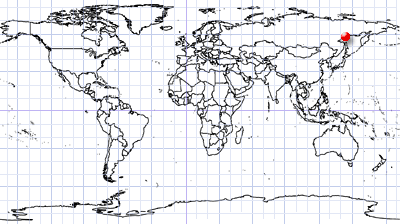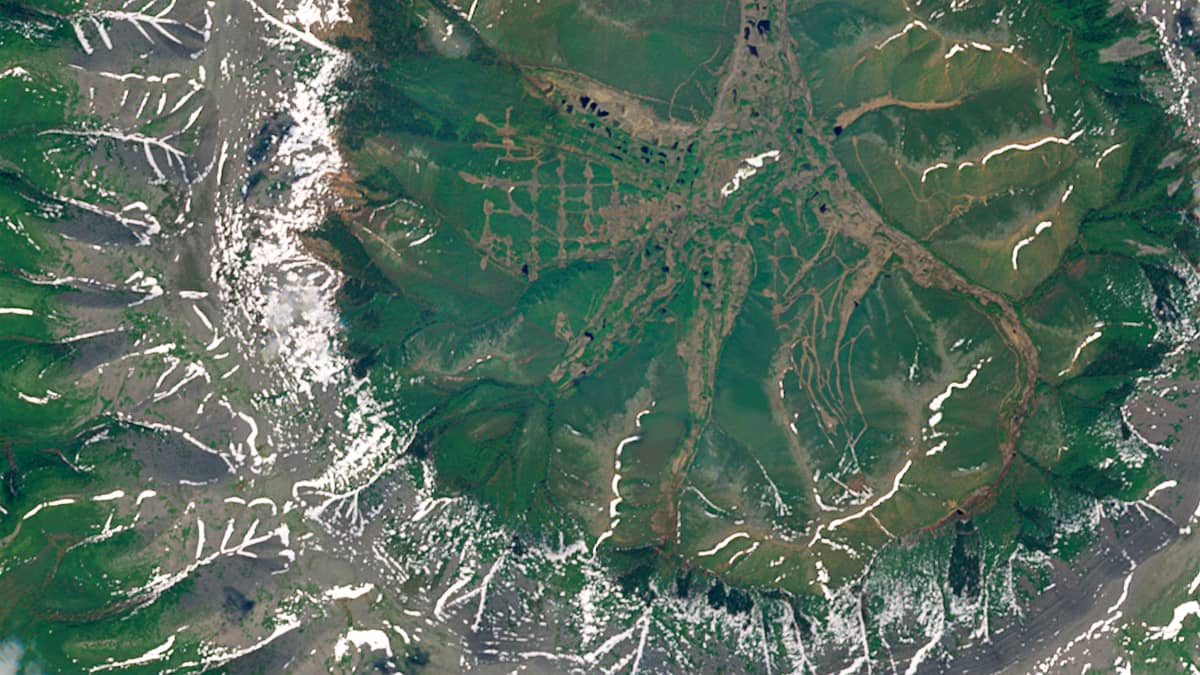
Kondyor Massif
Khabarovsk Krai | Far Eastern Federal District, Russia
Dates of acquisition:
• 2025.06.02 | 02:21:31 UTC
• 2025.10.01 | 02:25:29 UTC
Sensors: Sentinel-2A,B L1C
Coordinates: ca. 57.59°N, 134.66°E
This Sentinel-2 image shows a ring-shaped structure of mountains covered in nearly melting snow. An image including a SWIR band from the same date is also shown. The right image shows the same area covered in snow for comparison. It is acquired in October 2024.
Kondyor is a mountain range located in the Ayano-Maisky district of the Khabarovsk Krai in Russia. It consists of alkaline-ultramafic igneous rock. This difficult-to-access mountain ridge is primarily known for its almost perfect ring shape, measuring around 8 km in diameter and reaching heights of between 1200 and 1387 metres.
Kondyor is neither an impact crater nor a volcano.
This ring structure formed when a mantle plume ascended from the core-mantle boundary to the lower edge of the Earth’s crust. The intrusion of a teardrop-shaped body of molten magma rising from the depths into the upper rock layers of the Archean basement of the Aldan Shield pushed the host rocks apart. This process, known as translithospheric mantle diapirism, took place between 176 and 143 million years ago, developing over a period of around 65,000 years. The massif is essentially the top of a diapir column reaching down to a depth of at least 10 kilometres. Its outer edge consists of metamorphosed bedrock pressed to the surface and hardened at high temperatures and pressures, transforming it into hornfels. These rocks are the strongest and most resistant of all and form a ring mountain range that has withstood erosion and is clearly visible from space.
In the north, where the circle of the Kondyor ridge opens up, a river of the same name flows out. Inside the massif, there is a platinum deposit of national importance. The deposits are enormous, as evidenced by nuggets weighing between 1.5 and 3.5 kg. Mining began in 1984, with gold, silver, iridium, osmium and many other rare minerals also being found here.
Further reading
Kondjor-Massiv (Wikipedia, German)
Массив Кондёр (Elementy, Russian)
Translithospheric Mantle Diapirism (Journal Of Petrology, Oxford Academic)




